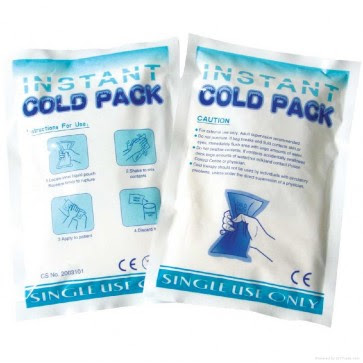WHAT IS A KNEE REPLACEMENT
Knee replacement is a kind of arthroplasty. Arthroplasty literally means "the surgical repair of a joint," and it involves the surgical reconstruction and replacement of degenerated joints, using artificial body parts, or prosthetics.
When the articular cartilage of the knee becomes damaged or worn, it becomes painful and the knee is hard to move. Instead of sliding over each other, the bones rub and crush together.
With a prosthesis, the patient will feel less pain, and the knee will move properly.
There are three common reasons for knee replacement
Osteoarthritis : this type of arthritis is age related, caused by the normal wear and tear of the knee joint. It mostly affects patients aged over 50 years, but younger people may have it.
Osteoarthritis is caused by inflammation , breakdown, and the gradual and eventual loss of cartilage in the joints. Over time, the cartilage wears down and the bones rub together. To compensate, the bones often grow thicker, but this results in more friction and more pain.
Rheumatoid arthritis : also called inflammatory arthritis, the membrane around the knee joint to become thick and inflamed. Chronic inflammation damages the cartilage, causing soreness and stiffness.
Post-traumatic arthritis : this type of arthritis is due to a severe knee injury. When the bones around the knee break or the ligaments tear, this will affect the knee cartilage.
AFTER KNEE REPLACEMENT WHAT FOLLOWS
Every person who undergoes knee replacement must consult with a therapist to provide therapy exercises to strengthen the muscles around the new knee.
Therapy begins from the first day after the knee replacement to the next three months. This Is because it takes 12weeks I.e 3 months for knee replacement rehabilitation.
WHY DO YOU NEED A THERAPIST AFTER YOUR KNEE REPLACEMENT
Therapist provide pain MAnagements, exercise program , muscle stimulation, proper lying and sitting positions, energy conservation techniques etc. A regular exercise program is a key part of recovery from your operation. When you build up strength in the muscles around your new joint, it will help you get back to your normal activities
METHODS OF ACHIEVING THERAPY GOALS
ELECTRICAL MUSCLE STIMULATION
Electrical stimulation is a therapy that passes an electrical current to an affected area. Nerve conduction within the region is altered, which can in turn alter muscle contractility. Blood flow to these tissues is also increased with electrical stimulation. Patients often experience less pain after electrical stimulation.

Ice and Heat Application. Ice and heat are useful in warming up and cooling off muscles. In addition, these methods can stimulate blood flow and decrease swelling, important parts of the healing process. The key to proper treatment is knowing when to ice and heat an injury.
Ultrasound. Ultrasound uses high frequency sound waves to stimulate the deep tissues within the body, which leads to warming and increased blood flow to these tissues
Ultrasound. Ultrasound uses high frequency sound waves to stimulate the deep tissues within the body, which leads to warming and increased blood flow to these tissues
Stretches for Muscles and Joints. Stretching is vital in maintaining good range of motion for joints and flexibility of muscles. If the individual has stiff joints or tight muscles, normal activities, such as climbing stairs or reaching overhead, can be severely affected. With proper stretching, these functions can be preserved. After an injury or surgery, scar tissue forms and soft tissue contracts, so stretching is especially important.
Exercises to Strengthen the Body. Strengthening exercises help the patient improve the function of the muscles surrounding the replacement. The goal is to improve strength and increase the range of motion of the replaced joint over time. Recently, therapists have placed more emphasis on core strengthening, because the body’s core is its foundation. Strengthening muscles in the back and pelvis increases stability and improves balance, which goes hand-in-hand with a successful recovery from knee or hip replacement.

Calf resistance exercise
Leg raising and stretching exercise with resistance
Leg extension exercise using ball

Heel slides exercise with resistance
Hamstrings and calf muscles stretching exercise
Teaching patients proper lying and sitting at home. The therapist teaches patient proper sitting positions that will reduce the swelling on the knee. E.g Lie down with your surgical leg placed in a pillow and elevated at or above the level of your heart for at least 20 minutes. You may place two to three pillows length beneath your surgical leg if you have a wide swelling.
While you are resting and elevating the leg, place ice packs around your knee for 15 to 20 minute time. Place a clean, dry towel or pillowcase between your skin and the cold pack.
Visit us today for more blog post..@hltherapy.blogspot.com
Call us on 08065152282. Email us @healthylifetherapy@gmail.com
Thank you .



















No comments:
Post a Comment